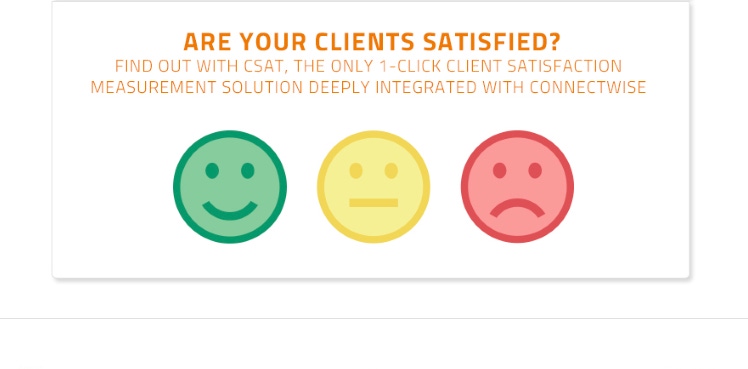CSAT Customer Satisfaction Tool Strives for Deeper Insights on Each TicketCSAT Customer Satisfaction Tool Strives for Deeper Insights on Each Ticket
The solution is billed as a complementary offering to the related-but-different, Net Promoter Score.

Mytech Partners’ Lyf Wildenberg has an easy way to explain the difference between customer satisfaction and customer loyalty.
Customer satisfaction – and specifically, transactional customer satisfaction – is a measure of how pleased a customer is with a particular transaction, like the handling of a support ticket.
Customer loyalty, explained the CEO and president of the Minneapolis managed service provider (MSP), is something altogether different.
“When I think of loyalty in the organization, I think how does Harley (Davidson) get people to tattoo their logo on their body,” Wildenberg said.
That distinction is at the heart of a new customer satisfaction system named simply, CSAT.
In fact, everything about the CSAT is designed with simplicity in mind. At the conclusion of a transaction – say, the closing of that support ticket – the user sees three traffic-light-colored emoji across the bottom of the closed service ticket message.
A green smiley face indicates a positive experience. A yellow face with a horizontal line for a mouth denotes a neutral interaction. And a red frown face means you have a dissatisfied customer.
“We reduce the energy that the respondent has to expend, so we get a really high response rate,” said Brad Benner, Founder of Nex.to, which developed the 14-month-old, software-as-a-service (SaaS) solution.
Benner said his latest endeavor is partly the product of his years as the owner of his own MSP, which he sold in 2010.
Nex.to is marketing CSAT as an essential must-add to the Net Promoter Score (NPS) system, another measurement approach favored by MSPs, which asks users “on a scale of 0-10, how likely would you be to recommend (company name) to a friend or colleague?”
The NPS, Benner explained, is an excellent way to measure loyalty – the likelihood a customer will tattoo your logo on their body.
Meanwhile, the CSAT provides instant feedback about the customer’s reaction to the individual transaction that just concluded, he said.
“NPS and CSAT aren’t opponents,” the Nex.to website reads. “They measure different things, and the data they provide is complementary, not conflicting.”
At ProviDyn, Inc., response rates climbed from about 3 percent under their previous, more cumbersome customer satisfaction measurement tool, to 46.6 percent using CSAT, said Linda Messing Williams, director of client services for the Atlanta, Ga.,-based MSP.
“It does allow me to actually pinpoint the issue as to just one ticket,” she said. “It allows me, for negative or neutral responses, to act on just that ticket.”
With negative responses running at a scant 1.5 percent, Williams said, more effort is spent correcting the issue and making the customer happy, than holding engineers responsible.
CSAT is available as an integrated component of ConnectWise management platforms. A license for up to five employees costs $69 per month, or $690 per year.
At Mytech Partners, managers employ a gamification strategy to drive a healthy competition for excellent customer service using the CSAT responses.
“That instantly pops up on a display that the entire team can view,” Wildenberg said. “If a negative response comes up, there’s some internal peer pressure.”
Send tips and news to [email protected].
About the Author
You May Also Like


